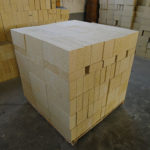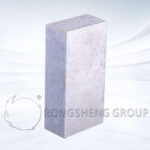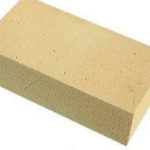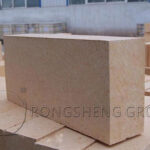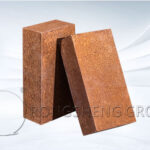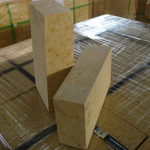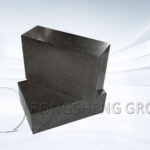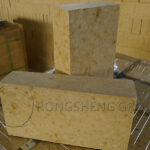Low creep high alumina brick is a kind of high alumina refractory brick. Because of its low creep rate, it is also called low creep high alumina brick. Used in high-temperature industrial furnaces under long-term high-temperature environments. Common low creep refractory bricks include low creep high alumina bricks and low creep clay bricks.

Low Creep High Alumina Brick
Common high-alumina bricks cannot solve the problem of low creep in a long-term high-temperature working environment and are likely to cause accidents when the kiln is in use. Therefore, choosing low creep and high alumina bricks as the lining of the furnace can solve this problem.
The low creep high alumina brick is an improvement based on the commonly used high alumina refractory bricks. In the original formulation of high alumina bricks, refractory raw materials with low creep rate are added, and the forming and firing are controlled reasonably so that the high alumina bricks have a certain low creep rate.
Low creep and high alumina bricks are made of brown corundum, fused mullite, “Kyanite, andalusite, sillimanite” materials, high-grade bauxite, and other refractory materials as the main raw materials. Low creep refractory bricks are made by adding additives and binders, manufactured by a special process, high-pressure molding, and sintering at high temperature. It can be made into standard size refractory bricks and brick shapes of different sizes according to specific construction needs. Such as porous lattice bricks, polygonal-shaped refractory bricks, etc. The size of specific low creep high alumina bricks can be customized according to customer needs.
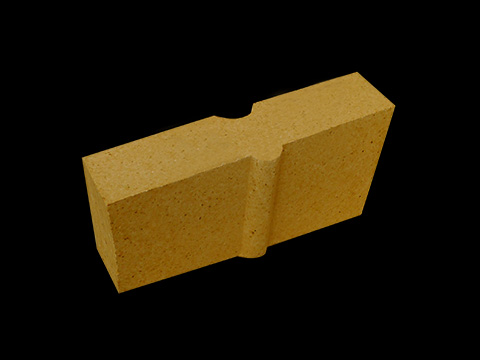
Characteristics of Low Creep High Alumina Brick
- Low creep rate and good volume stability at high temperatures. Under the action of constant temperature and constant load, the low creep and high alumina bricks have small changes in their interiors with time. The volume is stable in high-temperature environments, and the risk of lining falling off is not easy to occur.
- Good resistance to gas erosion and erosion. In a high-temperature environment, low creep and high alumina bricks are not only difficult to change in volume, but also have good resistance to gas erosion and long service life.
- High compressive strength and good wear resistance. Low creep and high alumina bricks can withstand greater gas pressure and resist the impact of dust in the gas.
Use of Low Creep High Alumina Brick
Low-creep high-alumina bricks have the characteristics of high-alumina bricks due to their high performance and low creep rate. They are the preferred lining for industrial kilns in high-temperature environments. It can ensure the long-term service life of the kiln and avoid accidental collapse during use.
Common low-creep high-alumina bricks can be used in blast furnace hot-blast stoves and other industrial kilns. It can be made into low-creep high-alumina bricks of different specifications and sizes according to specific construction needs, such as checker bricks, special-shaped bricks, anchor bricks, etc. It is mainly used in industrial furnaces in long-term high-temperature environments.
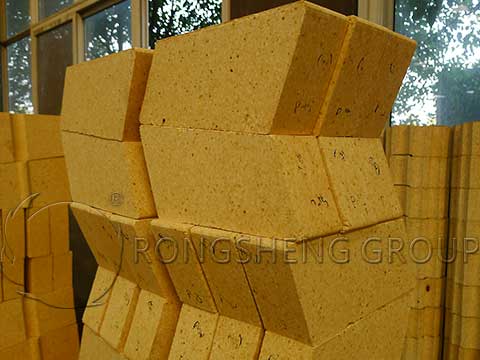
What is the difference between high alumina brick and low creep high alumina brick?
The main difference between low creep high alumina brick and high alumina brick is the low creep rate. The creep rates of high alumina bricks and low creep high alumina bricks produced under the same material are different. In addition, the low-creep high-alumina bricks use high-temperature materials with a small creep rate, and the material is higher than the general high-alumina bricks, and then undergoes high-pressure forming and high-temperature firing. It is more resistant to high temperatures than high alumina bricks, with higher material and higher body density.
High-alumina bricks are made of bauxite clinker, combined with clay and additives, high-pressure molding, and high-temperature sintering. High alumina bricks are characterized by high refractoriness, resistance to acid and alkali, and good thermal shock stability. The low-creep high-alumina bricks are advanced refractory materials, which are more resistant to high temperatures than high-alumina bricks. Low creep and high alumina bricks have better refractoriness, thermal stability, and slag resistance.
The raw materials of high alumina bricks are all bauxite particles and powders. A certain proportion of sillimanite, andalusite, and kyanite are added to the raw materials of low creep high alumina bricks than high alumina bricks. During the firing process, many tiny cracks are generated around the “three-stone” particles. The existence of the micro-cracks improves the thermal shock resistance of the high alumina brick. Therefore, thermal shock stability, low creep, high alumina bricks are more stable than high alumina bricks.
In short, whether it is a high-alumina brick or a low-creep high-alumina brick, it depends on different usage conditions. High-alumina bricks are cheaper than low-creep high-alumina bricks. Therefore, low-creep high-alumina bricks are used for large temperature changes. If the temperature is low, use high alumina bricks. This can not only reduce costs but also meet the production requirements of the kiln lining.
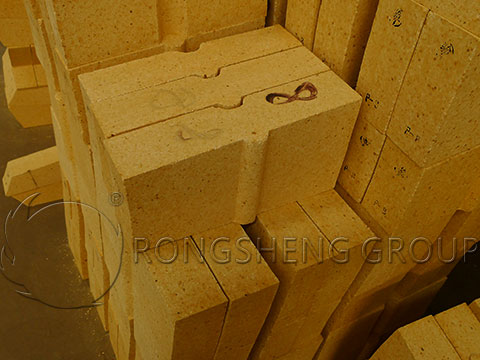
RS Refractory Brick Manufacturer
Rongsheng is an experienced manufacturer of refractory bricks. Rongsheng has an advanced refractory brick production line. Rongsheng’s refractory brick products have many types and high quality. In many customer cases, the service life of Rongsheng’s refractory brick products is satisfactory to customers. In the production and sales of high alumina bricks for many years, various multi-performance high alumina brick products have emerged in response to customer needs. For example, anti-stripping high alumina bricks, low creep high alumina bricks, etc. For more information and prices of refractory bricks, please contact us. We will provide you with services according to your specific needs.

